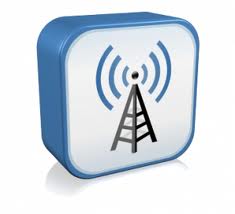Sometimes you might face the problem of WiFi signal strength. This article will tell you how you can boost WiFi signal strength.
Wi-Fi is one of those amazing technologies that have made our lives much easier and flexible. Now we do not need wires to connect to the internet and all the devices may connect to the internet or to each other wirelessly creating a virtual home media center link. 
But there might be a little problem when you are using a Wi-Fi connection in your home that is the signal strength problem. Well, there are many reasons that cause these frequent disconnections problem at whims. But no to worry, this post enlists some of the worked out methods to boost your Wi-Fi signal strength in your home for smooth connections to the internet.
Here are 5 best methods to boost your Wi-Fi signal:
1. Try to center your signal
The wireless routers generally have omnidirectional nature when acting as a transceiver making it possible for the devices to exchange data with your regular cable modem. As a result the connectivity region of a wireless router is in the form of a virtual sphere with variable range. The objects around such as walls, tables, chairs and most of all metal objects intercept and block the signal to different extents. When you place your router on a corner wall, you are practically reducing the connectivity sphere to half. So please ensure that the router is placed at a strategic central location to all your devices to ensure maximum connectivity range.
2. Focus your signal
Though the routers have an inbuilt antenna but the external objects and especially the metal ones tend to block the signal plus the location of the router cannot always be central to all your devices. As a result sometimes you might be required to use an additional external antenna to focus the Wi-Fi signal to the desired spot. There are also some methods to make an antenna at home with soda pop can on the internet but it will be preferred if you just buy one if you have no financial issues. The homemade antennae might work but it is not guaranteed but again there is no harm in trying.
3. Try changing your channel
The Wi-Fi 802.11 standard protocols use the 2.4 GHz band to transmit and receive data (certain newer version may also use the 5GHz band). But the problem is that so does a whole hub of devices such as Bluetooth sets, baby monitors, cordless phones etc. The best way is to try changing your channel. There are 13 separate channels in the same band. You may try out different channels and notice the signal strength and then choose the best one.
4. Use a repeater
When the area of consideration is really large, a single router might not be enough to complete the whole area. In such cases you might need a repeater. You may use a secondary spare router as a repeater by connecting into the main router via LAN and place it on the weak spots. Configure the settings same as the first router and turn the DHCP on the second router off.
5. Check for updates
It is quite possible that since the time you purchased your router, a software update has been pushed. Try to check for firmware updates for your router and that may solve the problem is some cases.

